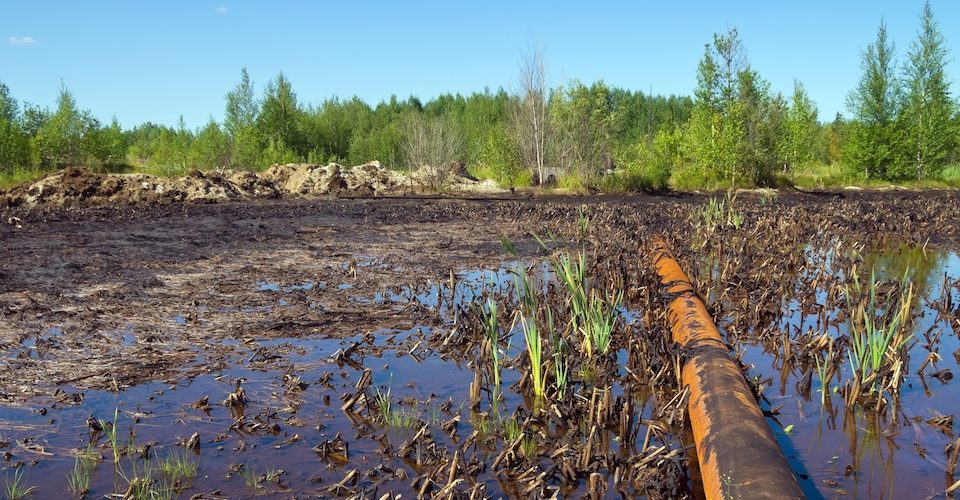If oil and gas pipeline proponents can talk about indirect economic benefits stemming from new pipeline infrastructure, opponents should be able to consider the environmental impacts of those indirect actions when arguing against them, according to the Pembina Institute’s federal policy director.
If oil and gas pipeline proponents can talk about indirect economic benefits stemming from new pipeline infrastructure, opponents should be able to consider the environmental impacts of those indirect actions when arguing against them, according to the Pembina Institute’s federal policy director.
Fair is fair, according to Clare Demerse, and if oil and natural gas companies tout the economic benefits of upstream oil sands production and downstream refining when making the case for new pipeline infrastructure, organizations like Pembina should be able to include the environmental and climatic impacts associated from such activities in the national discussion about our energy future.
Demerse was speaking after the recent release of Climate Implications of the Proposed Energy East Pipeline, a report detailing the greenhouse gas implications of TransCanada’s proposed Energy East pipeline to carry 1.1 million barrels of oil from Alberta across Saskatchewan, Manitoba and Ontario to refineries in Quebec and New Brunswick.
Their report found production of oil sands crude is projected to jump almost 40 per cent if the project gets a green light from the National Energy Board, increasing upstream greenhouse gas emissions by up to 32 million tonnes annually.
But linking pipelines to the greenhouse gas emissions resulting from refining and consuming the oil they help flow has, to date, garnered heavy criticism from pipeline advocates who claim this takes the analysis off course, contributing GHG emissions directly to projects it is only indirectly responsible for. This has been especially true in the heated debate over the climate impacts of another TransCanada project, the Keystone XL pipeline.
The Canadian Association of Petroleum Producers (CAPP) disagreed with Pembina’s methodology and indicated, according to the CBC, that the NEB hearing stage is not the best place to talk about oil sands production when the issue under debate is a pipeline conversion.
“The discussion for greenhouse gas issues related to oil production happens at the time the production projects themselves are approved,” CAPP vice-president of markets and transportation Greg Stringham told CBC. “To discuss them again as part of the pipeline regulatory process would be duplicative.”
But Demerse said recently that “we’re at the point now in Canada where we need the environmental considerations to be equally broad and equally big picture” as the economic benefit considerations.
And the environmental considerations could be huge. Greenhouse gas emissions generated from producing the crude to fill the Energy East pipeline will be even greater than those associated with the contentious Keystone XL pipeline awaiting approval from the U.S. State Department if Pembina’s analysis is correct.
Data on the environmental impact of actually constructing and converting the existing pipeline from natural gas to oil isn’t available as it’s too early in the process, but the impacts will be “significant,” Demerse said.
“There are compressor stations that they use on a natural gas pipeline and on an oil pipeline you need pump stations, so it’s different infrastructure,” she said. “It’s not a matter of taking out product X and putting in product Y.”
But TransCanada spokesperson Shawn Howard told the Toronto Star that “Energy East will not substantially affect the development of Canada’s oil sands or global greenhouse gas emissions.”
The Alberta-based energy giant has indicated they will put forward their full suite of project documents in the first half of 2014 before the NEB spells out how they plan to assess the pipeline.
Ontario Energy Minister Bob Chiarelli announced in November he had directed the Ontario Energy Board to hold public meetings along the pipeline route to gauge public appetite for the project, but made it clear Ontario cannot formally influence the project’s outcome as that role belongs to the NEB.
“Our role is public suasion,” the minister said at the time. Hearings are expected to begin in early March.
Economic benefit vs. environmental impact
TransCanada commissioned Deloitte & Touche LLP in Sept. 2013 to do an economic benefit study of the proposed project that looked at benefits for upstream oil sands producers and downstream refiners and consumers.
That report estimated $10 to $25 billion in GDP growth during the six-year development and construction phase of the pipeline, 37 per cent of which would be accrued in Ontario, which would be home to almost half of the Alberta-to-New Brunswick pipeline.
Deloitte also forecast the creation of 91,000 jobs in the construction phase of the project with 28 per cent of those jobs benefitting Ontarians with anywhere from $3 to $7.2 billion also expected in additional tax revenue to federal, provincial and municipal bank accounts.
Looking at these economic benefits is “totally fair and totally valid,” Demerse said, so if the financial gains are fair play, shouldn’t environmental drawbacks be part of the conversation too?
Now that Canada is increasingly becoming an energy power, Canadians are no longer thinking about pipelines outside the context of Alberta’s oil sands production, Demerse said.
“It’s pretty common sense that if you have an oil pipeline there’s a connection to oil, and that Canada is a country that’s producing a lot of oil and that does have an environmental footprint,” she said.
“I really think we Canadians are ready for this kind of conversation.”
Andrew Reeves is the Editor-in-Chief of Alternatives Journal. Overrun, his book about Asian carp in North America, will be published in Spring 2019 by ECW Press. His work has also appeared in the Globe & Mail, Spacing and Corporate Knights. Follow him on Twitter.












